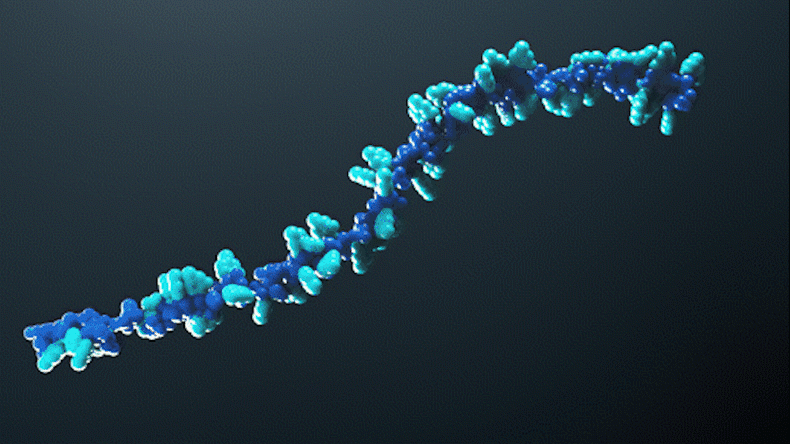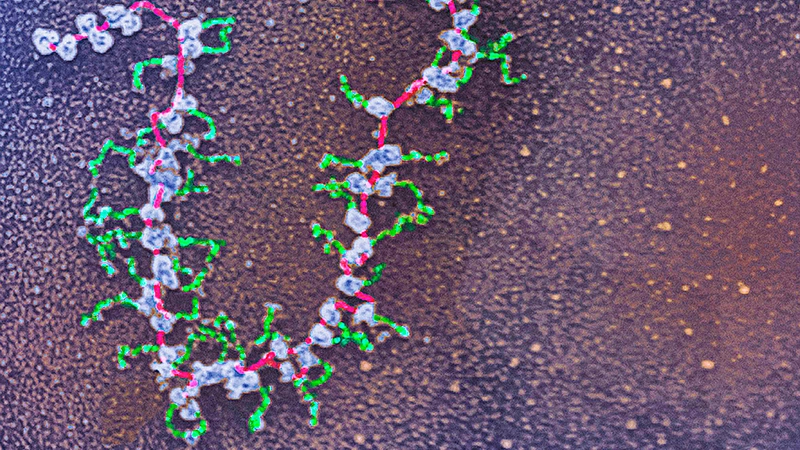Cells have a built-in search and delete function. The existence of such a system came as a surprise 30 years ago, when researchers experimenting with petunias discovered it accidentally.
Today, however, scientists are wielding that capability as powerful medicine.
 VIDEO
VIDEO
Medicines that leverage this search and delete system are designed to block the production of disease-related proteins by targeting RNA, the instructions normally used by cells to build proteins. This new type of therapeutic has the potential to interrupt almost any disease process in the body. Novartis is developing innovative experimental RNA-targeting therapies that have the potential to help lower cholesterol levels and reduce the risk of traumatic events associated with heart disease, such as heart attack or stroke.
Take a visual tour of the history of RNA-targeting medicines from 1990 to today.
The purple petunia problem

In 1990, a scientist at the University of Arizona, in the US, wanted to make purple petunias even more purple. His team added genes to the plant that coded for purple and waited for the flowers to bloom.
It backfired. Instead of purple, the flowers turned white.
The instructions for purple pigment that the researchers introduced had inadvertently – and mysteriously – blocked the flower’s naturally occurring purple instructions without altering the flower’s DNA. Today, this mechanism is called RNA interference, which is one of two pathways that can be leveraged to disrupt protein production by targeting its RNA. (The other pathway is called antisense-oligonucleotides.)
In 1990, however, neither term had yet been coined. All scientists had was a failed experiment and a bunch of white petunias.
From mystery to powerful tool

The petunia experiment inspired scientists around the world to learn more. One team, led by scientists Craig Mello and Andrew Fire, experimented with targeting RNA in tiny worms called C. elegans.
Mello and Fire constructed a double-strand of RNA made of nucleic acids, the building blocks of DNA and RNA. The strand’s pattern of nucleic acids matched the RNA instructions for a muscle protein produced by the worms. When they injected the strand into the worms, it canceled out matching RNA instructions in the worms’ cells.
It was as if they’d entered the target RNA code into the search and delete field of a word processor and pressed “enter.” The worms stopped producing the muscle protein and started to twitch, a known side effect of a lack of that protein.
By mimicking this mechanism, researchers could potentially interfere with the production of almost any protein, including those involved in disease. Because of the potential of this discovery to change medicine, Mello and Fire won the Nobel Prize in physiology or medicine in 2006.
Today, several approved medicines are based on RNA. These medicines work in different ways. For instance, some medicines use small interfering RNA and others use single strands of RNA called antisense-oligonucleotides to search for and delete a disease-related protein. In addition, some COVID-19 vaccines use messenger RNA (mRNA) to train the immune system to recognize viral proteins and protect against them.
The perfect disguise

The ability to search for and delete RNA instructions has since been used in laboratories for research, but it took nearly 20 years after the discoveries of Mello and Fire to bring the promise of RNA-targeting medicines into focus.
One of the challenges was that the nucleic acids that make up RNA-targeting medicines look a lot like viral invaders. When these strands circulate in the body, the human immune system fights back.
For RNA-targeting medicine to work, it must flow through the body and get to its cellular destination unnoticed. So scientists have devised clever disguises that conceal the strands like an invisibility cloak. An extra atom here and a tiny chemical change there can prevent the RNA-targeting medicine from being detected by the immune system.
A new kind of medicine

RNA-targeting medicines sometimes include both the cloaked search strand and a small molecule that guides the strand to a target cell. The guide ensures that the targeted RNA instructions are only shredded in the right cells, such as in a cancer cell or in a cell that is producing a disease-driving protein.
Once the medicine finds the right cell, it enters, installs itself and runs, like an app running in the background of a smartphone. The cloaked and precisely guided RNA-targeting medicine can do its work without interruption for months, repeatedly shredding RNA instructions.
RNA-targeting medicines tend to be formulated as injections. As some might remain active for months, injections can potentially be given infrequently, making it a different kind of medicine in terms of clinical practice as well as in terms of biology.
Main image by Mark Mazaitis
Take a visual tour of RNA-targeting medicines. #RNA #scientificresearch



